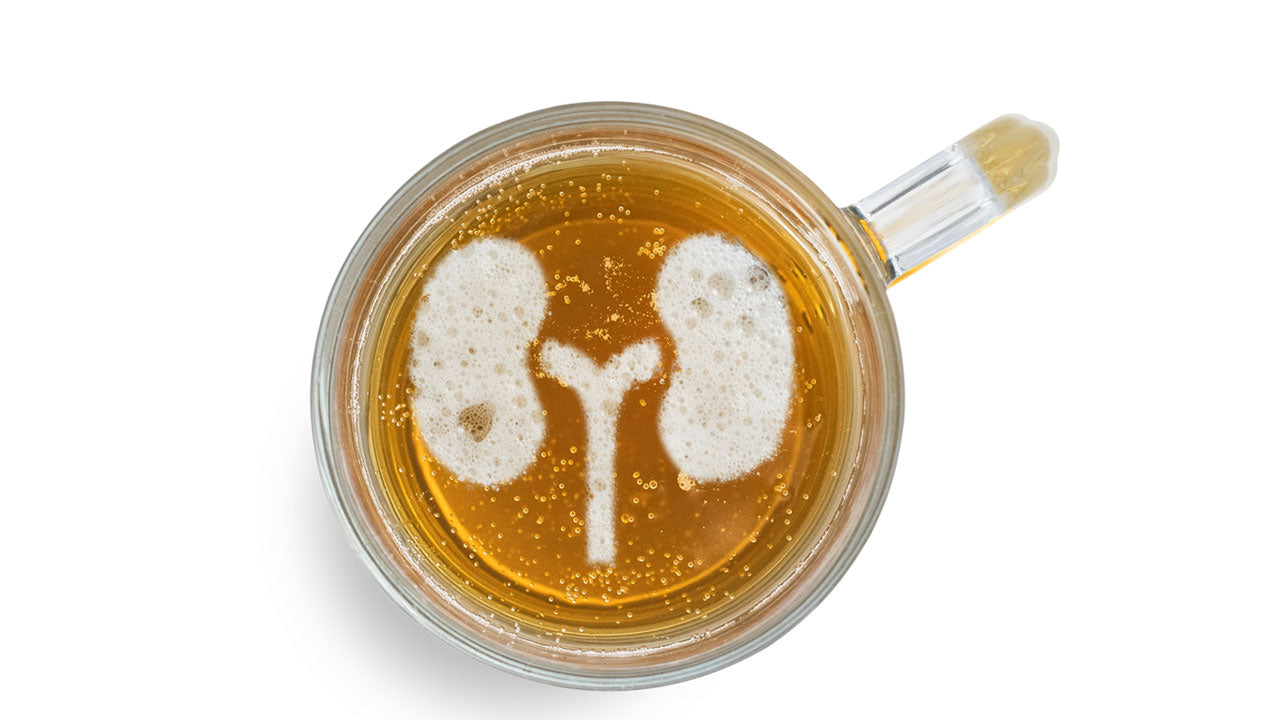End-Stage Alcoholism: The Signs and Symptoms of Alcohol Addiction
 By: by Amino Science
By: by Amino Science

Alcohol is a powerful substance with a long and varied history. On one hand alcohol has been a substance of social lubrication and celebration for thousands of years, but on the other it is, in essence, a poison that can lead to addiction and have devastating personal consequences. Alcoholism is a disease that affects up to 1 out of every 8 Americans and contributes to around 88,000 deaths per year. If alcoholism progresses unchecked, it can culminate in end-stage alcoholism and even premature death. This article describes the signs of alcohol addiction and what happens when a loved one reaches the end stages of alcohol abuse.
The Early Signs of Alcoholism
Some people can drink alcohol regularly and never develop an alcohol addiction problem. Others go through periods of alcohol abuse or overuse, for example during college or in times of high stress. Alcohol use disorder can advance over many years, but it contains three distinct stages. We'll begin with the overview of the initial stages before fully exploring the end-stage symptoms of alcoholism.
Stage One: Social Drinking, Binge Drinking, and Occasional Alcohol Abuse
This first stage of alcoholism is essentially an exploratory stage. When those who ultimately become addicted to alcohol first enter stage one, they often experiment with different kinds of alcohol and test their limits with binge drinking. This is common among young adults, particularly teens and college-aged individuals.
- For men: Binge drinking is more than 5 alcoholic beverages in a 2-hour window.
- For women: Consuming 4 or more alcoholic beverages in 2 hours is considered binge drinking.
Playing games meant to accelerate drunkenness (like beer pong) often leads to consuming much more than the above-listed minimum for binge drinking. While chronic, long-term alcohol use is dangerous, so are these short bouts of binge drinking, as they can cause alcohol poisoning, coma, and sometimes death. It also begins an addiction pattern whereby people begin to develop a dependency on the feeling that alcohol provides.
Problematic Alcohol Abuse
Once the habit of drinking escalates past the early stage of social drinking, binge drinking, and excessive partying, the issue progresses to the second stage of alcoholism. This is marked by an emotional dependency on the drug of alcohol. It is less about feeling good at a special event and more about wanting to feel that way all the time. Drinking at this stage occurs to prevent the feelings of acute alcohol withdrawal.
Stage Two: Increased Dependency on Alcohol and Problem Drinking
In the second stage of alcoholism, alcohol consumption increases in frequency and is no longer tied to special events like partying. A person in stage two is likely to start drinking every weekend, and then may increase to drinking every day. The impulse for drinking is no longer to have fun at a party, but may arise from the following desires:
- To relieve stress
- As an excuse to bring together friends
- To relieve boredom
- To avoid feelings of loneliness or sadness
At this stage, emotions motivate drinking habits, which is what makes regular alcohol use different from otherwise moderate drinking: people become emotionally attached. Instead of the moderate drinker's glass of wine with a meal, the regular drinker consumes alcohol to feel good, and the more they drink, the more physically and emotionally dependent they become, which can ultimately lead to the development of full-blown alcoholism.
This middle stage also brings about social changes related to the drinking problem: changes in friendships, strife with romantic attachments, erratic social behavior, and increasingly regular failures to uphold certain commitments (like getting to work on time, picking kids up from school, or abstaining from alcohol while pregnant).
The drinker will likely become aware that the effects of heavy drinking (irregular sleep patterns, depression, and anxiety) often make him or her feel sick, but they will still not curb, moderate, or quit the habit. They may begin to experience legal trouble resulting from incidents like public intoxication or drinking and driving.
At this stage, a drinking problem becomes obvious and family members will start to urge their loved one to stop drinking. If they can't stop with or without intervention, the disease progresses to the next stage.

End-Stage Alcoholism
The final stage of alcoholism occurs when drinking has consumed the life of the addicted person. They now must drink to avoid alcohol withdrawal symptoms, and they must schedule their life around this need. Without getting help with detox and rehab, the addict may drink themselves to death.
Stage Three: Addiction
Alcohol dependency is a habit that can be stopped, but alcohol addiction is characterized by an inability to curb the harmful use of alcohol. This starts to lead to other problems in life, including the following devastating physical health problems.
- Racing heart palpitations
- Excessive sweating
- Body tremors due to nervous system damage
- Nausea unrelated to hangovers
- Severe irritability
- Insomnia or trouble sleeping
- High blood pressure
- Liver damage or alcoholic hepatitis
A late-stage or end-stage alcoholic has to drink more and more, not for the enjoyment of alcohol, but to meet a persistent psychological and physiological need. They may be inconsolable until they can resume drinking each day, and may have other drug addictions and compulsive behaviors and rituals surrounding their drinking. They will most likely ignore any and all social conventions, and drink in the daytime, in the morning, alone, at non-alcoholic gatherings, or at work.
Treatment options exist to help end-stage alcoholics with alcohol withdrawal symptoms and social coping mechanisms, and it's important to seek such treatment to avoid cirrhosis of the liver, liver disease, and liver failure. Nutritional aids such as amino acid supplementation can also help improve liver health. (For information on how to protect liver health with amino acids, read this article.)
In the case of liver failure, the person will not be able to survive without a liver transplant, and many hospitals won't perform a transplant until the patient has been able to abstain from alcohol for at least 6 months. This is not possible for many addicts in the United States, even if they do receive adequate and professional addiction treatment.
The Final Stage
Late stage alcoholism is a scary processes to go through and heartbreaking to observe. When alcohol dependence leads to increased substance abuse and a barrage of detrimental health conditions from blackouts to alcoholic liver disease, many people feel that they are watching a slow-motion car crash they are unable to stop.
Occasionally the last stage of alcoholism comes as a surprise if the addict is what's known as a high-functioning alcoholic, able to maintain social decorum and maintain employment until the problem has progressed to the final stages of addiction.
It's important to remember that alcoholism develops over a long period of time, and that being able to recognize the stages of alcoholism in a family member or friend could help save their life by getting them the help of a medical professional before it's too late. That being said, any stage of alcoholism is dangerous, from initial youthful binge drinking right up to the end stage when people start to experience liver, heart, and brain damage, not to mention malnutrition and mental health disorders (which could lead to suicide).
F. Scott Fitzgerald, author of The Great Gatsby, once wrote of alcoholism, “First you take a drink, then the drink takes a drink, then the drink takes you.” That is a very succinct summary of the three stages of alcoholism, including the final stage. Before the drink takes one of your loved ones away from you, know the warning signs of alcohol addiction, and do what you can to help them quit drinking while there's still time to recover.

Up to 25% off Amino
Shop NowTAGS: conditions liver
Join the Community
Comments (0)
Most Craveable Recipes




 833-264-6620
833-264-6620



















